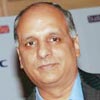Waiting for the wavelets

Information technology may not be the hottest sector on the bourses right now, but its outlook as a valuable tool for businesses remains as bullish as ever. A reaffirmation of this came at the BT Round Table held in Chennai recently as part of the Business Today Managing Tomorrow Series presented by NEC Corporation of Japan.
The Round Table, the first such event this year under the ongoing series, brought together speakers from leading IT and ITES companies to discuss ways of “Achieving Business Resilience Through IT Innovation”, especially since companies often find it difficult to keep track of the rapid developments in IT hardware and software and apply them to their businesses. R. Chandrasekaran, President and MD, Cognizant Technologies; Bhaskar Sayyaparaju, CTO, Sify Technologies; and K. Ananth Krishnan, CTO, TCS, took part in the discussion, which was moderated by BT’s Deputy Editor Arnab Mitra. The event was attended by the city’s top brass.
The tone for the evening was set by Tomohiro Yagi, CEO, NEC Asia, who, in his introductory address, extolled the virtues of IT innovation. He said NEC’s success was largely due to its energy-efficient products that were made using environment-friendly technologies as well as enhanced security and multimedia functions.

The speakers talked of the various ways in which businesses could leverage technology with advantage. While Chandrasekaran extolled the virtues of Web 2.0 that not just empowered customers but also helped businesses become more profitable by tailoring their products to suit the needs of their end customers, Sify’s Sayyaparaju underscored the benefits of virtualisation that allowed for outsourcing and maintenance of a company’s IT infrastructure by a third party and freed it from the hassles of running an IT department with its concomitant costs. “Everything can be virtualised. Whether it is the network, or storage or servers and desktops,” said Sayyaparaju, whose company, Sify, provides these services as well as consultancy to companies that seek to rationalise their IT infrastructure.

According to Sayyaparaju, though network outsourcing has been in vogue for more than a decade through virtual private networks storage, virtualisation through data centres—that manage servers of clients—is beginning to take off in a big way. “With server virtualisation, the environment gets standardised, security becomes more efficient and the cost comes down,’’ said Sayyaparaju.

Besides hardware, applications are getting virtualised with software being provided as a service. “Google applications have been growing at the rate of 80 per cent, eliminating the need for Microsoft Windows—such is the rapid evolution of technology,” said Sayyaparaju. He pointed out that Salesforce.com was selling very well in its hosted malls using Google applications.

It eventually plugged the leakage by compressing the data so that it could be managed by just two centres. With the money thus saved, the company was able to focus more on its “core”.
TCS’s Krishnan spoke excitedly about the “Technology Market Map’’ that his company was using to optimise its IT spending. The map—designed as evolving quadrants based on business requirements— was first brought out by Professor Clayton Christensen of the Harvard Business School, who’s also on the TCS board. Krishnan said the map will resolve every innovator’s dilemma by bringing in clarity on how IT dollars should be spent for the best results.

Web 2.0 was also lauded by Krishnan during the question and answer session that followed the presentations. He said Tata’s Nano had greatly benefitted from that technology. “There are so many suggestions sent to me on technology improvement in-house that sometimes I wonder if people want to get into my shoes,’’ he joked. Krishnan, however, didn’t think that superstar technologies such as Web 2.0 will dominate the world. He said there will be many such wavelets—and it would be wise for the CIO or the CTO to evaluate each technology in terms of his own business requirement, perspective and impact.

“Remember, the business is with you and if you are looking at the solution as mere outsourcing, there will be losses,” he warned. In response to queries from the audience and the moderator, Krishnan and Chandrasekaran also pointed out how corporate governance and people issues could also be optimised using IT innovation.
There were many other queries as well, but those went unanswered for want of time.










